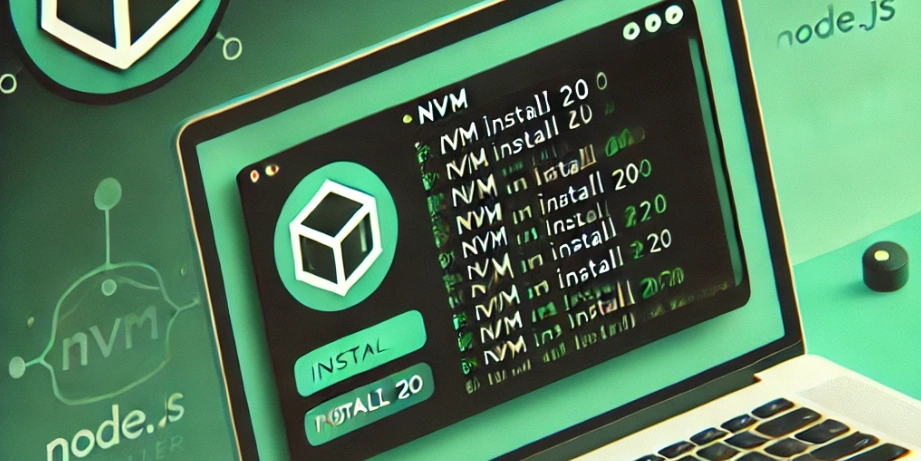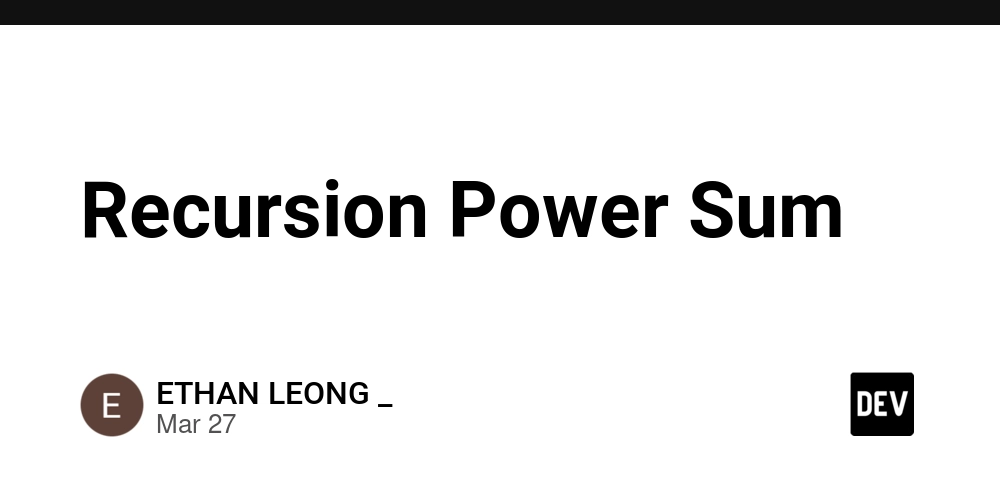How to Install and Use NVM Globally on Your System
Node Version Manager (NVM) allows you to install and manage multiple versions of Node.js on your system. Since NVM is installed globally, it does not depend on a specific project folder, making it easier to switch between Node.js versions across different projects. Steps to Install and Use NVM 1️⃣ Open Your Terminal Depending on your operating system, open the appropriate terminal: Windows: Open Git Bash, Command Prompt, or PowerShell (if using nvm-windows, use Command Prompt instead). Mac: Open Terminal. Linux: Open a terminal window. 2️⃣ Run the Installation Commands Run the following commands one by one to install NVM: curl -fsSL https://raw.githubusercontent.com/nvm-sh/nvm/v0.39.5/install.sh | bash source ~/.bashrc # If using Bash shell source ~/.zshrc # If using Zsh shell (Mac users) These commands will install NVM and make it available in your terminal. 3️⃣ Install and Use Node.js 20 Once NVM is installed, you can install Node.js version 20: nvm install 20 nvm use 20 To make Node.js 20 the default version for all new terminal sessions, run: nvm alias default 20 4️⃣ Verify the Installation To check if Node.js 20 is active, run: node -v It should output something like: v20.x.x 5️⃣ Reinstall Dependencies in Your Project If you are working on a specific project (e.g., admin-panel), navigate to the project folder and reinstall dependencies: cd "D:\Documents\company projects\admin-panel" rm -rf node_modules package-lock.json pnpm-lock.yaml .next pnpm install pnpm dev This should resolve any version-related issues. Troubleshooting: Missing .bashrc File If you encounter the error: bash: /c/Users/Shishir/.bashrc: No such file or directory Try the following solutions: 1️⃣ Use .bash_profile or .zshrc If .bashrc is missing, try: source ~/.bash_profile # For Bash users source ~/.zshrc # For Zsh users (Mac/Linux) 2️⃣ Manually Create .bashrc (For Windows Git Bash) If the issue persists, manually create the .bashrc file: touch ~/.bashrc echo 'export NVM_DIR="$HOME/.nvm"' >> ~/.bashrc echo '[ -s "$NVM_DIR/nvm.sh" ] && \. "$NVM_DIR/nvm.sh"' >> ~/.bashrc source ~/.bashrc Then try installing and using Node.js again: nvm install 20 nvm use 20 3️⃣ Restart Your Terminal If none of the above steps work, close and reopen your terminal, then run: nvm install 20 nvm use 20 Conclusion By following these steps, you can successfully install and manage Node.js versions using NVM. This method ensures you have flexibility across different projects without interfering with system-wide installations. If you face any issues, feel free to restart your terminal or reinstall NVM.

Node Version Manager (NVM) allows you to install and manage multiple versions of Node.js on your system. Since NVM is installed globally, it does not depend on a specific project folder, making it easier to switch between Node.js versions across different projects.
Steps to Install and Use NVM
1️⃣ Open Your Terminal
Depending on your operating system, open the appropriate terminal:
-
Windows: Open Git Bash, Command Prompt, or PowerShell (if using
nvm-windows, use Command Prompt instead). - Mac: Open Terminal.
- Linux: Open a terminal window.
2️⃣ Run the Installation Commands
Run the following commands one by one to install NVM:
curl -fsSL https://raw.githubusercontent.com/nvm-sh/nvm/v0.39.5/install.sh | bash
source ~/.bashrc # If using Bash shell
source ~/.zshrc # If using Zsh shell (Mac users)
These commands will install NVM and make it available in your terminal.
3️⃣ Install and Use Node.js 20
Once NVM is installed, you can install Node.js version 20:
nvm install 20
nvm use 20
To make Node.js 20 the default version for all new terminal sessions, run:
nvm alias default 20
4️⃣ Verify the Installation
To check if Node.js 20 is active, run:
node -v
It should output something like:
v20.x.x
5️⃣ Reinstall Dependencies in Your Project
If you are working on a specific project (e.g., admin-panel), navigate to the project folder and reinstall dependencies:
cd "D:\Documents\company projects\admin-panel"
rm -rf node_modules package-lock.json pnpm-lock.yaml .next
pnpm install
pnpm dev
This should resolve any version-related issues.
Troubleshooting: Missing .bashrc File
If you encounter the error:
bash: /c/Users/Shishir/.bashrc: No such file or directory
Try the following solutions:
1️⃣ Use .bash_profile or .zshrc
If .bashrc is missing, try:
source ~/.bash_profile # For Bash users
source ~/.zshrc # For Zsh users (Mac/Linux)
2️⃣ Manually Create .bashrc (For Windows Git Bash)
If the issue persists, manually create the .bashrc file:
touch ~/.bashrc
echo 'export NVM_DIR="$HOME/.nvm"' >> ~/.bashrc
echo '[ -s "$NVM_DIR/nvm.sh" ] && \. "$NVM_DIR/nvm.sh"' >> ~/.bashrc
source ~/.bashrc
Then try installing and using Node.js again:
nvm install 20
nvm use 20
3️⃣ Restart Your Terminal
If none of the above steps work, close and reopen your terminal, then run:
nvm install 20
nvm use 20
Conclusion
By following these steps, you can successfully install and manage Node.js versions using NVM. This method ensures you have flexibility across different projects without interfering with system-wide installations. If you face any issues, feel free to restart your terminal or reinstall NVM.












































































































































































![[The AI Show Episode 142]: ChatGPT’s New Image Generator, Studio Ghibli Craze and Backlash, Gemini 2.5, OpenAI Academy, 4o Updates, Vibe Marketing & xAI Acquires X](https://www.marketingaiinstitute.com/hubfs/ep%20142%20cover.png)



























































































































![[DEALS] The Premium Learn to Code Certification Bundle (97% off) & Other Deals Up To 98% Off – Offers End Soon!](https://www.javacodegeeks.com/wp-content/uploads/2012/12/jcg-logo.jpg)


![From drop-out to software architect with Jason Lengstorf [Podcast #167]](https://cdn.hashnode.com/res/hashnode/image/upload/v1743796461357/f3d19cd7-e6f5-4d7c-8bfc-eb974bc8da68.png?#)








































































































.png?#)

































_Christophe_Coat_Alamy.jpg?#)
 (1).webp?#)





































































































![Apple Considers Delaying Smart Home Hub Until 2026 [Gurman]](https://www.iclarified.com/images/news/96946/96946/96946-640.jpg)
![iPhone 17 Pro Won't Feature Two-Toned Back [Gurman]](https://www.iclarified.com/images/news/96944/96944/96944-640.jpg)
![Tariffs Threaten Apple's $999 iPhone Price Point in the U.S. [Gurman]](https://www.iclarified.com/images/news/96943/96943/96943-640.jpg)




































































































































